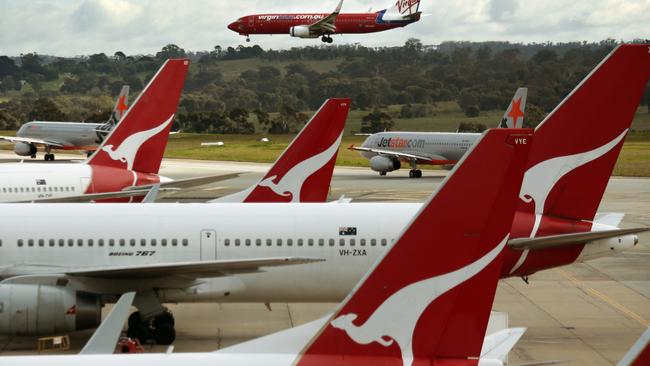Melbourne Airport near miss explained
Automation at Melbourne Airport allowed two aircraft to arrive at the intersection of runways at the same time.

An investigation into a near miss at Melbourne Airport three years ago has found the automated sequencing system used by Airservices Australia allowed two aircraft to arrive at the intersection of runways at the same time.
The Australian Transport Safety Bureau today published its final report on the incident involving an Emirates’ Boeing 777 and two Qantas 737s on the night of July 5, 2015.
The problem arose as the Emirates’ aircraft prepared to take off at the same time as two 737s were coming into land on intersecting runways in Melbourne.
When the Emirates’ B777 took longer than expected to taxi to the runway, the incoming 737 (VYE) was instructed to go around, at the same time as the other 737 (VXS) opted to go around.
The ATSB report revealed the air traffic controllers, including a trainee and her co-ordinator, had just seconds to react to the developing situation.
“At the same time as the trainee tower controller instructed the flight crew of VYE to go around, a runway occupancy caution activated in the tower because the B777 was still on the runway, and VYE was less than 15 seconds flight time from the threshold,” said the report.
“Two seconds later, the caution upgraded to a warning as VYE was now less than 10 seconds flight time from the threshold descending through 500 feet and the B777 was still on the runway.”
The report said separation between the two 737s was reduced to 2km and 900 feet, “as VXS crossed runway 34 in front of VYE, climbing in the missed approach on runway 27”.
“The tower controllers was responsible for maintaining a separation standard and the only available standard was visual,” said the report.
“However due to the limitations of human vision at night, and the disposition and trajectory of traffic at the time, visual separation could not be assured.”

In response to the incident, Airservices Australia introduced additional training for air traffic controllers at Melbourne Airport, relating to “night time compromised separation recovery”.
Airservices has also incorporated an “arrival stagger” into the Maestro automated sequencing system, so in the event of a missed approach, aircraft were not in unsafe proximity at the runway intersection.



